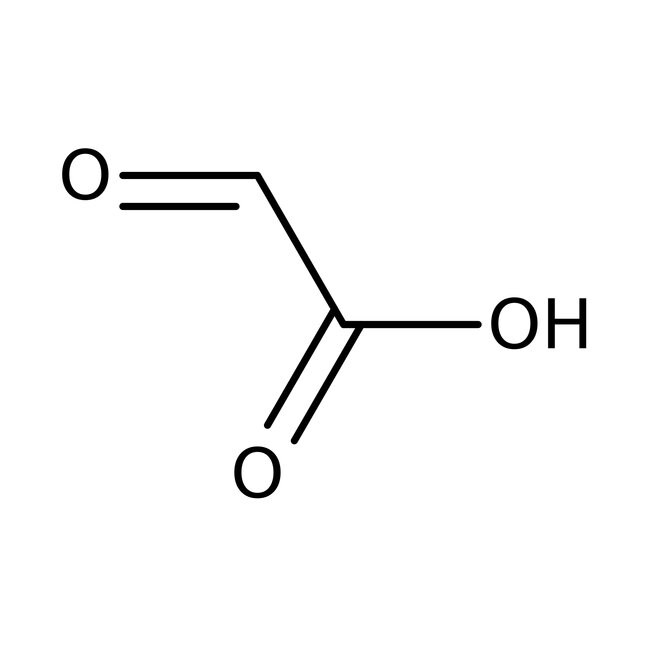Search Thermo Fisher Scientific
Glyoxylsäure, 50 % w/w wässr. Lösung, Thermo Scientific Chemicals



Glyoxylsäure, 50 % w/w wässr. Lösung, Thermo Scientific Chemicals
Chemikalien-Kennzeichnungen
Spezifikationen
Beschreibung
This Thermo Scientific Chemicals brand product was originally part of the Alfa Aesar product portfolio. Some documentation and label information may refer to the legacy brand. The original Alfa Aesar product / item code or SKU reference has not changed as a part of the brand transition to Thermo Scientific Chemicals.
Glyoxylsäure wird in der Hopkins-Cole-Reaktion verwendet, die beim Nachweis von Tryptophan in Proteinen eingesetzt wird. Reagiert mit Phenol, um 4-Hydroxymandelsäure zu erhalten, die bei weiterer Reaktion mit Ammoniak Hydroxyphenylglycin als Vorläufer des Medikaments Amoxicillin erzielt. Verwendung auch als Ausgangsmaterial für die Herstellung von 4-Hydroxyphenylessigsäure, die zur Gewinnung von Atenolol verwendet wird. Beteiligt an der Herstellung von Agrochemikalien, Aromen, kosmetischen Inhaltsstoffen und pharmazeutischen Zwischenprodukten. Verwendung auch in der Wasseraufbereitung und bei der Konservierung von Lebensmitteln. Weiterhin eingesetzt als Vorläufer bei der Synthese von Eisenchelaten. Dient darüber hinaus als Zwischenprodukt von Lackmaterial und Farbstoffen.
Löslichkeit
Mischbar mit Ethanol. Leicht mischbar mit Äther und Benzol. Unmischbar mit Estern.
Hinweise
Nicht kompatibel mit Metallen, Alkalien, starken Oxidationsmitteln und starken Basen.
Abbildungen
Dokumente und Downloads
Zertifikate
Häufig gestellte Fragen (FAQ)
Zitierungen und Referenzen
Sicherheit und Handhabung
Classification of the substance or mixture
CLP classification - Regulation(EC) No 1272/2008
Label Elements
Signal Word
Danger
Hazard Statements
H317 - May cause an allergic skin reaction
H318 - Causes serious eye damage
Physical Hazards
H290 - May be corrosive to metals
Precautionary Statements
P280 - Wear eye protection/ face protection
P301 + P330 + P331 - IF SWALLOWED: rinse mouth. Do NOT induce vomiting
P305 + P351 + P338 - IF IN EYES: Rinse cautiously with water for several minutes. Remove contact lenses, if present and easy to do. Continue rinsing
P310 - Immediately call a POISON CENTER or doctor/physician